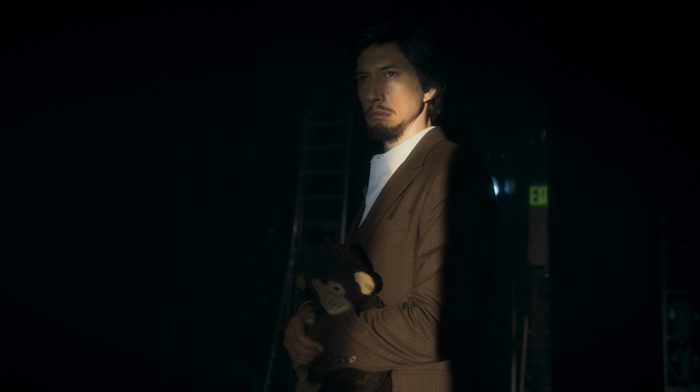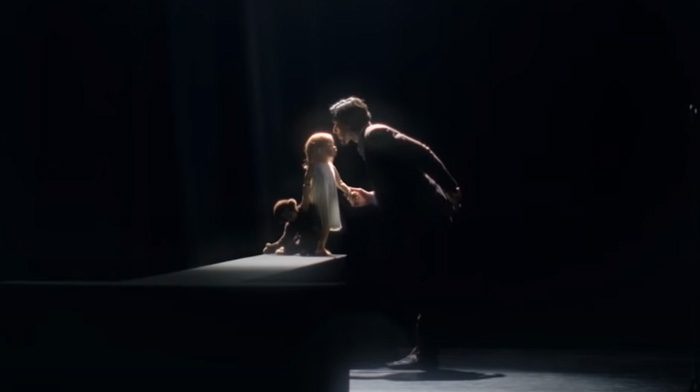
Annette, the new musical from French filmmaker Leos Carax (Holy Motors) starring Adam Driver and Marion Cotillard, arrives on Amazon Prime Video later this month. But Amazon Studios has also given the film a theatrical release, which begins today. You can read our full review of the movie here, but now that the film is out there for folks to see, let’s take a closer look at that final scene and try to sift through what we think Carax and writers Ron and Russell Mael, better known as the rock band Sparks, were trying to say.
The back half of the movie deals with the aftermath of vulgar comedian Henry (Driver) drunkenly killing his opera singer wife Ann (Cotillard) on a boat during a storm. Ann’s ghost decides to haunt her husband by imbuing their young daughter, Annette, with Ann’s powerful singing voice – something Henry is shocked by at first, only for that shock to give way to greed. Teaming up with Ann’s former accompanist (Simon Helberg), Henry capitalizes on the girl’s newfound ability by taking her on a worldwide tour, introducing “Baby Annette” to full stadiums as if she were some sort of King Kong-style freak of nature. For the main event, Baby Annette belts out tunes using her mother’s beautiful voice, and occasionally flies around on the stage. (This is a very strange movie.)

Annette Ending Explained
For most of the film, Annette is depicted as a wooden marionette. I personally found that decision to be distracting and unsettling for 99% of the movie’s runtime, but at least the reasoning behind it becomes clear in the final scene.
Henry is in jail for the murder of his wife and the accompanist, and as the film comes to an end, he is visited by Annette, still wooden and carrying a stuffed animal as she sits opposite from him in a table in the middle of an otherwise normal visitation room. “You’ve changed so much, Annette,” he says to her, and she replies, “Yes, I have.” Except the version of the character that replies is a flesh-and-blood girl (Devyn McDowell) who has seemingly appeared out of nowhere in the back of the room. The girl walks to the table and takes over the position of the marionette, telling her father that he cannot love her. In the last song before the credits roll, they sing a duet in which she expresses her displeasure with the way her parents exploited her and used her as a tool, and she leaves it unclear whether she will ever forgive them for their transgressions or if she will forget them entirely and move on with her life.
But the metaphor is clear: Annette, now a flesh-and-blood child, is no longer a marionette puppeteered and manipulated by her parents for their selfish means. The real Annette is taken out of the room by a security guard, while the marionette and the stuffed animal lay splayed out on the floor – the innocence of her childhood left behind at far too young an age.
Annette is in some theaters now and will debut on Amazon Prime Video on August 20, 2021.
The post ‘Annette’ Ending Explained: A Closer Look at That Final Scene appeared first on /Film.
0 Comments